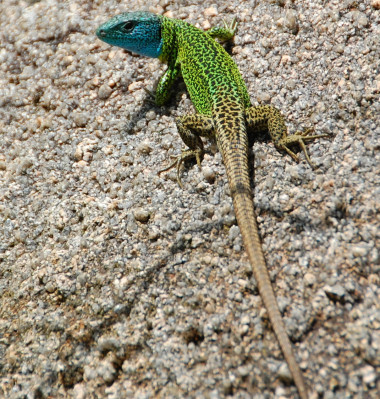The leatherback turtle in the Pacific Ocean is one of the most endangered animals in the world. Its population has declined by more than 90 percent since 1980. One of the greatest sources of mortality is industrial longlines that set thousands of hooks in the ocean to catch fish, but sometimes catch sea turtles as well. Using modern GPS technology, researchers are now able to predict where fisheries and turtles will interact and to reduce the unwanted capture of turtles by fishermen. Leer más.





| Según sus resultados la humedad no es determinante, pero la alta temperatura del suelo parece explicar los límites de distribución de la especie. “Esto sugiere que este lagarto podría ser vulnerable frente al cambio climático si no consigue adaptarse localmente mediante, por ejemplo, modificaciones en los lugares de puesta más idóneos”, declara a SINC Camila Monasterio, investigadora de la UCM. Leer más. |  |

Se ha confirmado por vez primera de manera inequívoca el efecto beneficioso en términos reproductivos que para las hembras de salamandra tiene la poliandria bajo condiciones completamente naturales. Leer más.
For many of us, hearing about arginine vasotocin (AVT), or its mammalian homolog vasopressin, conjures up memories from a physiology class about water balance and the antidiuretic effects of the vasopressin system. Leer más.
Continuing with my theme of posting about non-anoles that anolologists find interesting, here’s a summary of a fascinating poster about tail-curling in two species of Leiocephalus: L. carinatus (the famous consumer of A. sagrei in the Bahamas) and L. barahonensis. Tail-curling is known to function as a predator-deterrent signal in L. carinatus, but its potential as a social signal has remained unexplored. Bonnie Kircher, a student in Michele Johnson’s lab at Trinity University, set about rectifying this gap. Leer más.






